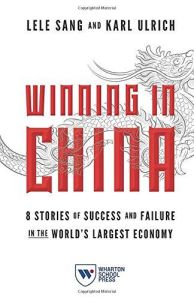Зарегистрируйтесь на getAbstract, чтобы получить доступ к этому краткому изложению.

Зарегистрируйтесь на getAbstract, чтобы получить доступ к этому краткому изложению.
Lele Sang and Karl Ulrich
Winning in China
8 Stories of Success and Failure in the World's Largest Economy
Wharton School Press, 2021
Что внутри?
The way business works elsewhere might not always work in China.
Recommendation
China, long the world’s fastest growing economy, has stymied many an ambitious foreign business. In this detailed account, academics Lele Sang and Karl T. Ulrich unwrap eight case studies – four firms that faced tough going in China and ultimately flopped, and four brands that successfully navigated a tricky territory. The authors show how differently businesses operate in China, where the government is always present and interpersonal relationships are crucial. In this book, executives and entrepreneurs will discover that just because an approach works well in the West doesn’t mean it will work at all in China.
Summary
About the Authors
Lele Sang is a global fellow at the Wharton School of the University of Pennsylvania. Karl T. Ulrich is vice dean of entrepreneurship and innovation at the Wharton School.


















Comment on this summary